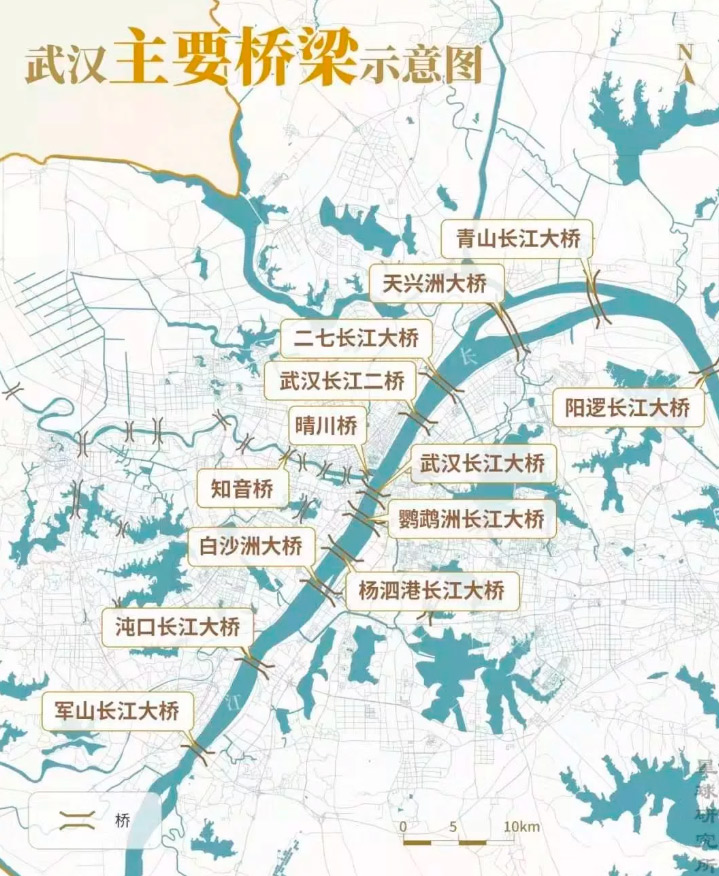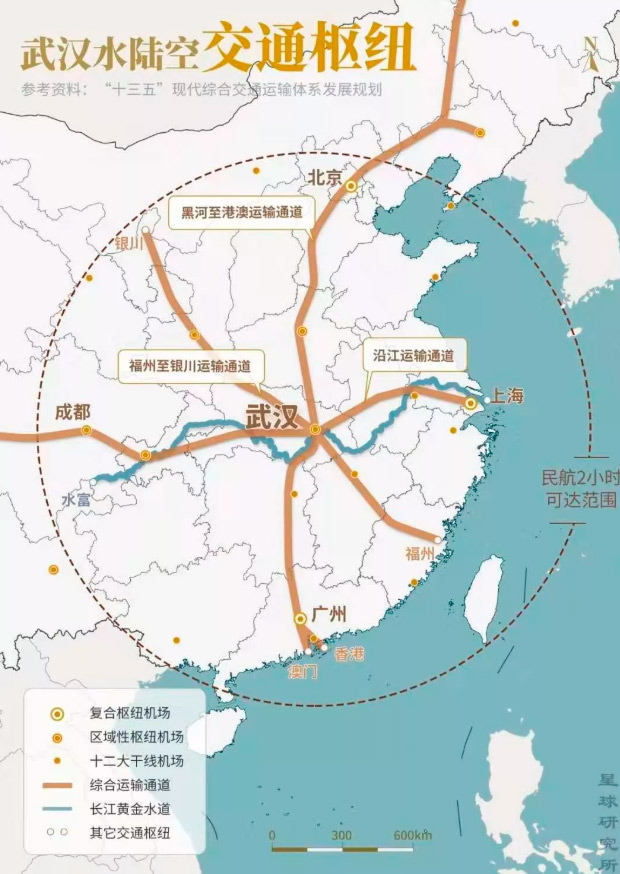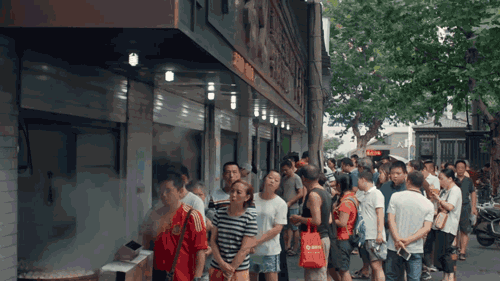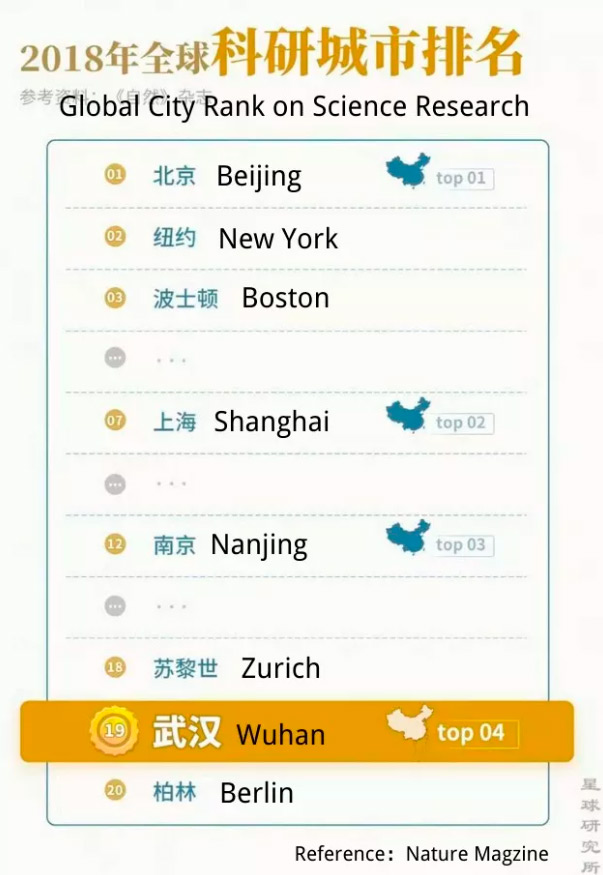The Coronavirus has accidentally put the City Wuhan to the center of the whole world's focus. I can hear almost everyone mention the name of Wuhan more than once every day.
We've been constantly fed news about the still serious situation of the city. It's difficult to keep very positive about the city currently, right? So, in this article, let's explore the city and ignore the virus so we can shed some positive light on this city and its people.
Trust me, this city's story won't be less interesting than that of Shanghai or any other famous cities in China. 1. Literally the CENTER OF CHINA

(How central is Wuhan in China?)
Look at the picture above, Wuhan is in the middle of both water and land transportation including railways and highways. Almost all the cities including Chengdu, Chongqing, Guangzhou, Shanghai, Beijing in China are within the circle that means Wuhan can be reached within 2 hours by air, or in 4-5 hours by fast train. It's known as "China's Thoroughfare (九省通衢 Jiǔshěng tōngqú)". 2. Rivers and lakes
The plain where Wuhan lies within has been made by the sands of the Yangtze River, the biggest river in China. More than 1600 big and small rivers empty into the Yangtze River in Wuhan.There're also 166 lakes scattered in the city of Wuhan. The biggest one, Tangxun Lake covers 47 k㎡, almost half of the city of Paris.The first bridge to be constructed over the Yangtze River was Wuhan Yangtze River Bridge, completed in 1957.After that, there were more and more bridges built over Wuhan's rivers and lakes. See how many bridges are in this city so far?

(There are 11 bridges on Wuhan's Yangtze River now)
3. Where China went to the republic
Thanks to its geographic advantage and the rise of railways, Wuhan especially Hankou (a Yangtze River boom district) began from 1900 to become a hustle and bustle, traffic and trade hub in China. It was called "the St. Louis and Chicago of China" at that time.
From the 20th century, following examples from coastal cities such as Shanghai, Wuhan opened up to trade and business with foreign investors. With modernization, the city equipped itself with strong military factories and open-minded people, which laid a solid foundation for the liberal revolution.
On October 10th, 1911, Sun Yat-sen's followers launched the Wuchang (a district in Wuhan) uprising, which led to the collapse of the Qing dynasty, as well as the establishment of the Chinese Republic.
Through the Wuchang Uprising, Wuhan became known as the birthplace of the Xinhai Revolution, named after the Xinhai year on the Chinese calendar. The city has several museums and memorials to the revolution and the thousands of martyrs who died defending the revolution.
4. Breakfast culture
Wuhan city was boosted by wharves. Wharves made Wuhan and also brought lots of immigrants including merchants and workers all over the country to Wuhan.
The day starts early on wharves. To save time and replenish enough energy for intensive physical work, people need to have a calorie-rich breakfast on the way to work. The tradition of having breakfast on the way to work has been passed to today.Breakfast has been such an important part of Wuhan life that they even made a special Chinese word for "having breakfast", they don't say regularly "吃早饭(chī zǎofàn)", they say "过早 (guòzǎo)". "过 (guò)" indicates "in a rush". Wuhan probably is the only city in China that can accept eating while walking.

There are more than 100 types of food on the Wuhannese breakfast menu. It is said that you can have a different breakfast every day over 1 month in Wuhan! More importantly, CHEAP! The most famous Wuhan food-Hot Dry Noodles (热干面 Règānmiàn) costs only 4 RMB even today.
With so many choices and the cheap price like this, Wuhannese are never fussy about where to eat. They eat while walking, or standing. The most typical place for Wuhannese to have food in the morning is a stool.5. A University City
Wuhan is a city with the most university students in the world. There are over 80 universities and 1 million university students living in Wuhan. It's said there's a public bus in Wuhan that connects 13 universities on its routine.Each campus of the top 7 universities of Wuhan was each built on their own hill, and all the campuses are surrounded by lakes. The natural resources shared by so many universities is a rare phenomenon in China.The universities have prepared countless talents to develop an industrial system for Wuhan. There's a high tech center in Wuhan and it is called Optical Valley -光谷Guānggǔ (Yes, they borrowed the name from "silicon valley-硅谷Guīgǔ"). The Optical Valley's market share of optical fibre and cable, reaches 66% of China, 25% of the world.With over 1 million university students in town there will certainly be great promise for Wuhan to have a bright and developing future. There is already data showing this
(Wuhan's year by year increasing power on science research)
These are just little pieces about Wuhan City. There is still too much more to tell you about this city. I hope this will inspire you to know more about Wuhan and also discover its many positive sides.
Let's wish all the suffering will end very soon. Wuhan will gradually heal from the disease and everything will go back to normal and peace in the end.
More importantly, let's look forward to continuing travelling around China and eventually Wuhan to explore its history and its development! 



